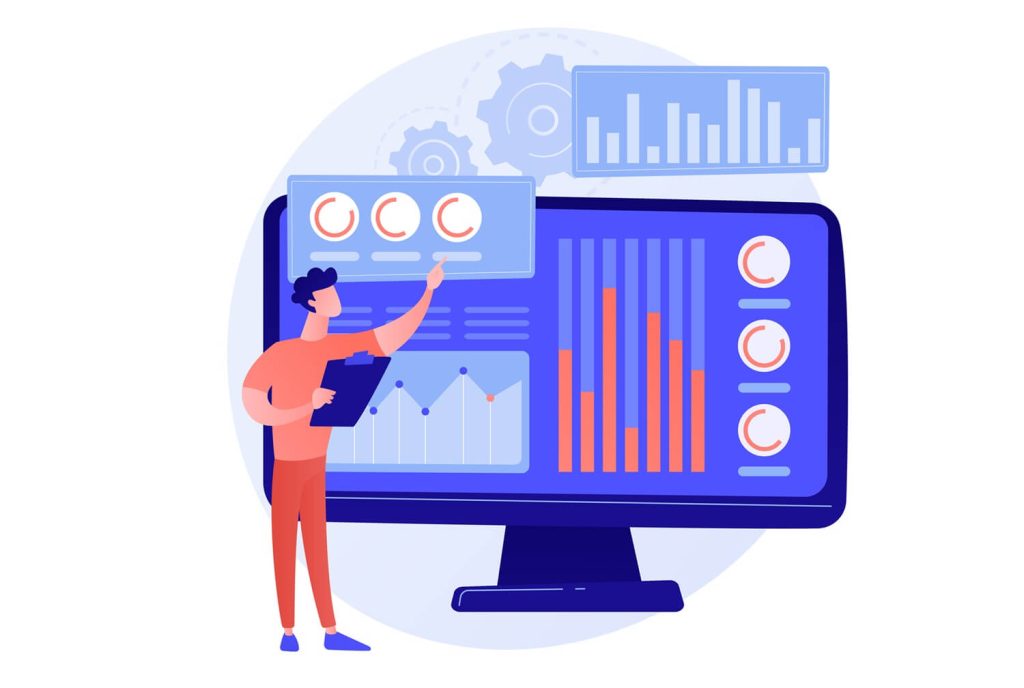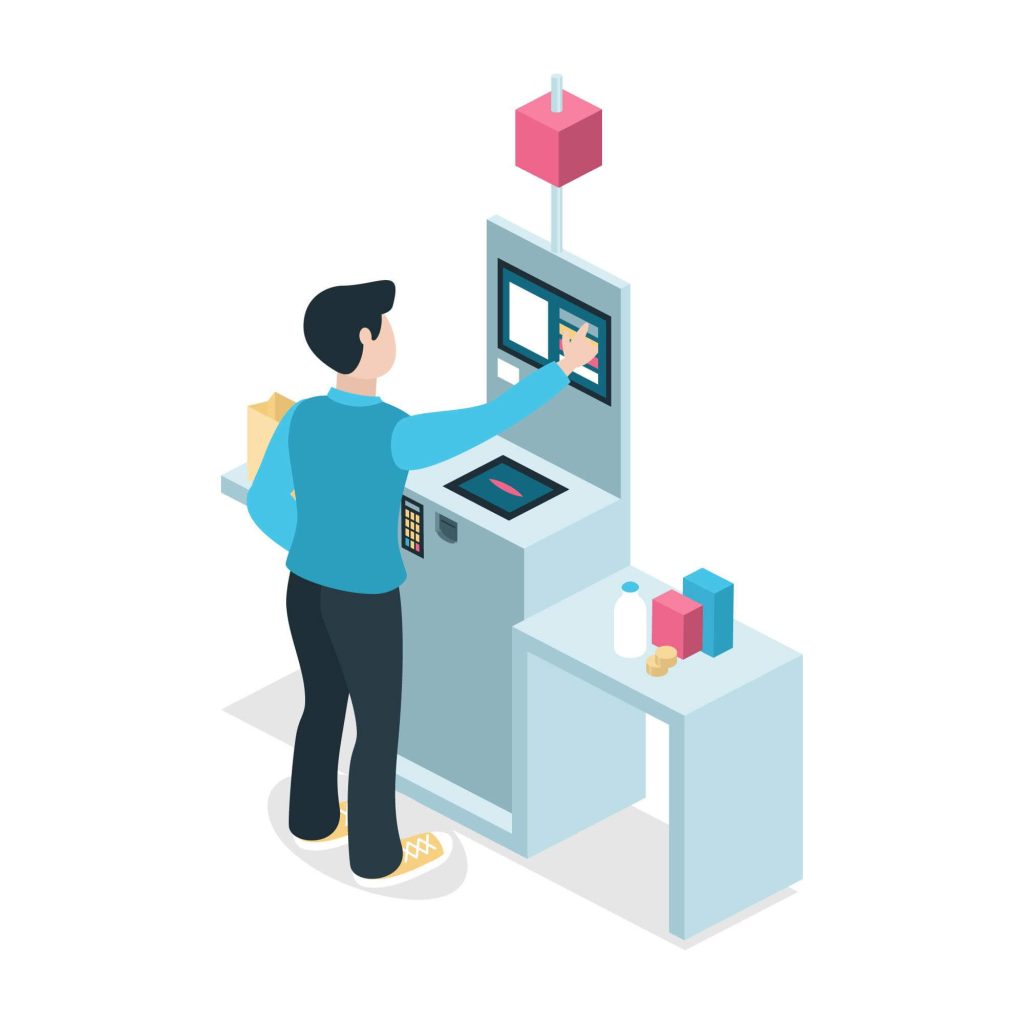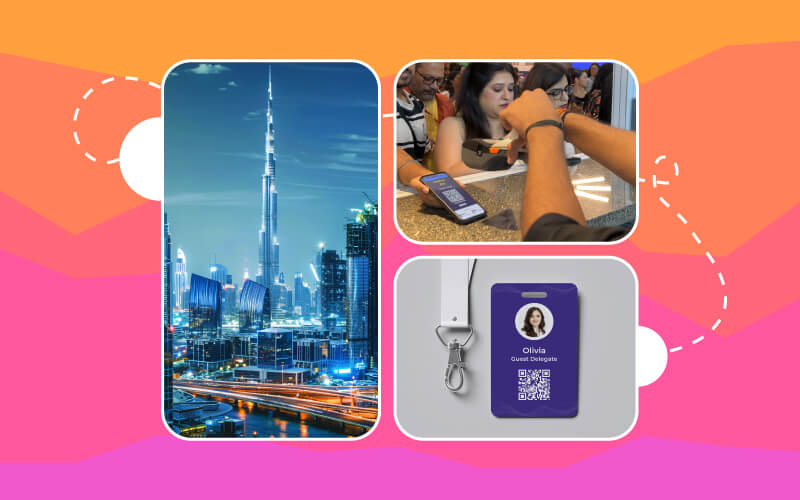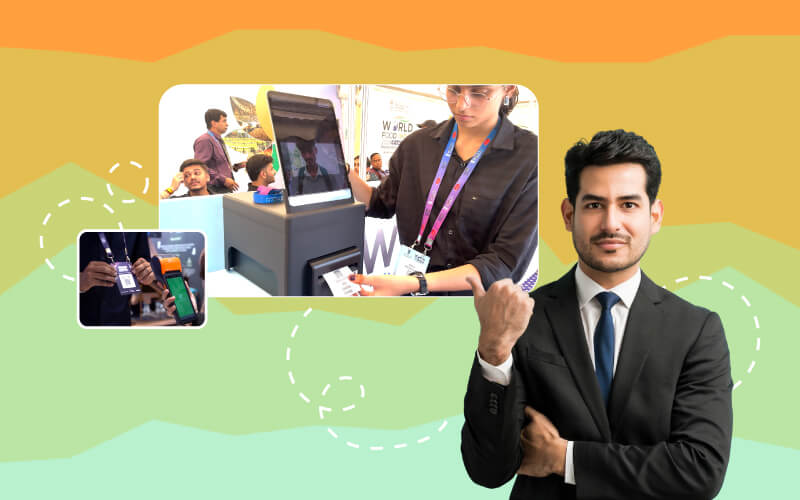Now is the time to understand and utilize event analytics with attendee tracking and engagement tools. However, with tools like an event attendance tracker, it gets easier to measure the success of an event. By leveraging attendee tracking, you’ll gain real-time insights on “How many people have attended or enjoyed the event? What’s the overall ROI? Details of attendee behaviour and more. As a result, you’ll be able to develop strategies for future events and enhance event attendee management.
This blog includes everything you need to know about attendee tracking and engagement tools, along with helpful tricks and tips to simplify attendance tracking for a seamless attendee data management system.
What Do You Understand by Event Attendee Tracking?
Event attendee tracking involves monitoring and analyzing various aspects of participant involvement, such as session attendance, participation in polls or surveys, and engagement with interactive content This process uses specialized tools and technologies to gather data about attendees before, during, and after the event. Moreover, event attendee tracking utilizes tools such as event registration platforms, RFID tags, and mobile check-in apps to gather and analyze data. These technologies assist organizers in monitoring attendance and enhancing event experiences.
Have you ever thought about why effective attendance monitoring is becoming a trend?

The answer to this question is simple, it provides valuable information about attendee behavior, helps in measuring the effectiveness of the entire event and provides mini tips to enhance future events. Not only this but by leveraging attendee tracking tools, event organizers can have real-time data, which helps them manage the overall event attendee management and improves everything that needs to be done.
The Importance of Attendee Tracking Tools
Attendee tracking at events isn’t just about counting how many people show up; it’s about gaining valuable insights that will help in making events better. By looking at who attended, which sessions they joined, and how they interacted, event organizers can use this data to improve future events. Here are the benefits of effective attendance tracking, including:
| Benefit | Description |
| Improved Attendee Experience | Tracking provides insights into attendee preferences, allowing for a more tailored and engaging event experience. |
| Real-Time Insights | Organizers can monitor attendee behaviour and engagement levels in real-time, enabling quick adjustments to enhance the event experience. |
| Verifying CE Credits | Accurately track and verify attendee participation in sessions eligible for continuing education credits, ensuring compliance and providing valid certification. |
| Data-Driven Decision Making | Collecting detailed data helps organizers make informed decisions about future events based on attendee behaviour and preferences. |
| Enhanced Security | Tracking ensures that only authorized attendees are present, improving overall event security and safety. |
| Measuring ROI | Detailed attendance data allows event planners to demonstrate the return on investment to stakeholders, sponsors, and clients. |
| Post-Event Engagement | Understanding attendee journeys enables targeted follow-up communications, such as personalized feedback requests or updates on future events. |
| Streamlined Registration Process | Modern tracking solutions simplify the registration process, making it faster and more efficient for both attendees and organizers. |
| Valuable Marketing Insights | Attendee data can be leveraged for marketing purposes, providing insights into demographics and session popularity to enhance future promotional efforts. |
Different Types of Attendee Tracking Tools

When it comes to attendee tracking, there are so many attendee tracking tools and methods available. However, analyzing and understanding these options can guide in terms of selecting the best approach for attendee data management. Let’s explore:
QR Codes and Barcodes
The use of QR codes and barcodes can be considered one of the best attendee tracking tools. According to a recent QR TIGER report, global QR code scans have increased four times in 2024, reaching 26.95 million. Attendees scan their event badges linked to QR codes and barcodes at entry points for seamless check-in. Implementing QR-based technology at events provides modern and effective ways to track attendees and enables a fast and accurate attendee management system. QR code technology is integrated with various systems and technologies to enhance functionality and streamline processes. These include event registration systems, event CRM, mobile event apps, etc.
See related: 13 Key Benefits of QR Codes at Events
Mobile Event Apps
Mobile event apps are game-changers for event attendee tracking. With customized apps, attendees can check in seamlessly, personalize their schedules, and provide instant feedback through live polls and surveys. The apps support mobile event tracking while providing valuable insights into attendee behavior and session popularity.
According to a survey, it was found that 78% of event professionals benefited from using mobile event apps, and they’ve improved ROI. Besides, it offers networking as it connects people and provides an opportunity to connect more professionally. However, with features like integrated 3D event diagramming, mobile apps enhance the experience by providing interactive event venue layouts. Additionally, event organizers can also make real-time adjustments and ensure a smooth attendee management system.
Read More: How Conference Attendee Management Helps Events Succeed
Self-Check-In Kiosks

Another key component of modern attendee management systems is self-check-in kiosks. With these kiosks, event check-in has never been the same. By scanning a QR code badge, entering a code, or searching their names, attendees can quickly check in at digital self-registration kiosks. Moreover, these kiosks are integral to effective event registration systems and enhance attendee tracking tools by seamlessly integrating with event CRM systems. Therefore, being a part of attendee tracking tools, self-kiosk offers valuable insights into check-in patterns and attendance flow, which helps organizers monitor and manage event participation effectively.
RFID Bands
“The RFID market is anticipated to expand from USD 15.8 billion in 2023 to USD 40.9 billion by 2032, representing a robust compound annual growth rate (CAGR) of 11.1% over this period.”
One of the most used and powerful tools for attendee tracking is RFID bands. It stands for Radio Frequency Identification. RFID wristbands or smart badges are known for a streamlined check-in process which allows attendees to enter events quickly with a simple tap at an RFID reader. Moreover, RFID wristbands provide real-time tracking of attendee insights such as event check-in and check-out times, session attendance, booth visits, movement patterns, interaction frequency, personalized engagement, and event duration. In addition, organizers can also leverage this tracked data to understand attendees’ behavior, measure engagement, and optimize event layouts.
Read More: Power Up With RFID Wristbands For Events: Access, Convenience, and More!
Types of Attendee Engagement Tools

It’s essential to understand how attendees interact with your event, which is crucial for measuring and enhancing engagement. Here are some key attendee engagement tools from which event organizers can track and analyze attendee involvement:
- Emoji Reactions: This attendee engagement tool allows attendees to express their emotions through vibrant emoji reactions. By incorporating this feature in events, one can add a lively and interactive element to an event, making it easier to gauge attendees’ immediate feelings and reactions. This helps organizers quickly understand attendee sentiment and adjust the event experience in real-time.
- Polling: Real-time polls are another powerful attendee engagement tool that enables participants to share their opinions and actively engage in sessions. The results are visualized interactively, fostering active involvement and encouraging discussion among attendees. This tool provides instant feedback, helping organizers measure engagement levels and adapt sessions accordingly.
- Surveys: Surveys are essential engagement tools for gathering detailed feedback on various aspects of the event. Whether seeking opinions on specific sessions or broader topics, surveys help collect data that informs improvements for future events. Organizers can use this feedback to make data-driven decisions and enhance future event planning.
- Live Q&A: A live Q&A session is a dynamic engagement tool in events that allows participants to pose questions and receive immediate answers. This feature keeps attendees engaged by addressing their queries in real time and creating an interactive learning environment. Moreover, this fosters a more engaging and responsive event experience, directly addressing attendees’ interests and concerns.
- Social Wall: The social wall encourages participants to share photos, comments, and experiences from the event. This feature promotes networking, collaboration, and a sense of community, making the event more interactive. Moreover, organizers can monitor this activity to gauge overall engagement and encourage a vibrant event atmosphere.

Challenges in Event Attendee and Engagement Tracking
Event attendance tracking is vital, but it comes with its unique challenges. Here’s a table summarizing all the potential challenges in event attendee and engagement tracking:
| Challenge | Description |
| Privacy Concerns | Protecting personal data and ensuring compliance with regulations like GDPR requires robust security measures and consent management. |
| Ensuring Accuracy | Maintaining data accuracy to avoid discrepancies due to manual errors or technical glitches, with automation and regular audits needed. |
| Managing Costs | Balancing the costs of advanced tracking technologies with available budgets, choosing cost-effective solutions that do not compromise essential features. |
| Handling Technical Issues | Ensuring reliable tech support and having contingency plans such as offline modes and data backups to address potential technical disruptions. |
| Integrating with Existing Systems | Ensuring seamless compatibility and data transfer between tracking software and existing event management tools. |
| Real-Time Data Processing | Capturing and processing high volumes of data efficiently during large events to provide timely insights without system lag or crashes. |
| Ensuring User Adoption | Overcoming resistance from attendees who may be uncomfortable with tracking methods, by clearly communicating benefits and ensuring user-friendly systems. |
| Data Security Risks | Implementing stringent measures to protect sensitive attendee data from unauthorized access and cyber threats. |
| Compliance with Regulations | Navigating and adhering to complex data protection laws that vary by location and event type. |
| Analyzing Large Datasets | Effectively analyzing large volumes of data to extract actionable insights, preventing valuable information from going untapped. |
Read More: Overcome 8 Common Challenges During Event Registration
Conclusion
In conclusion, harnessing the power of advanced attendee tracking and engagement tools is crucial for modern event management. Whether it’s RFID wristbands and mobile apps or online registration systems, these modern technologies are integral to an effective attendee management system. Get real-time insights into attendees’ behaviour, preferences, and engagement, and focus on enhancing event attendee management. Moreover, challenges like privacy concerns, accuracy, and costs must be managed; leveraging these tools can significantly optimize event experiences and streamline attendee management.






